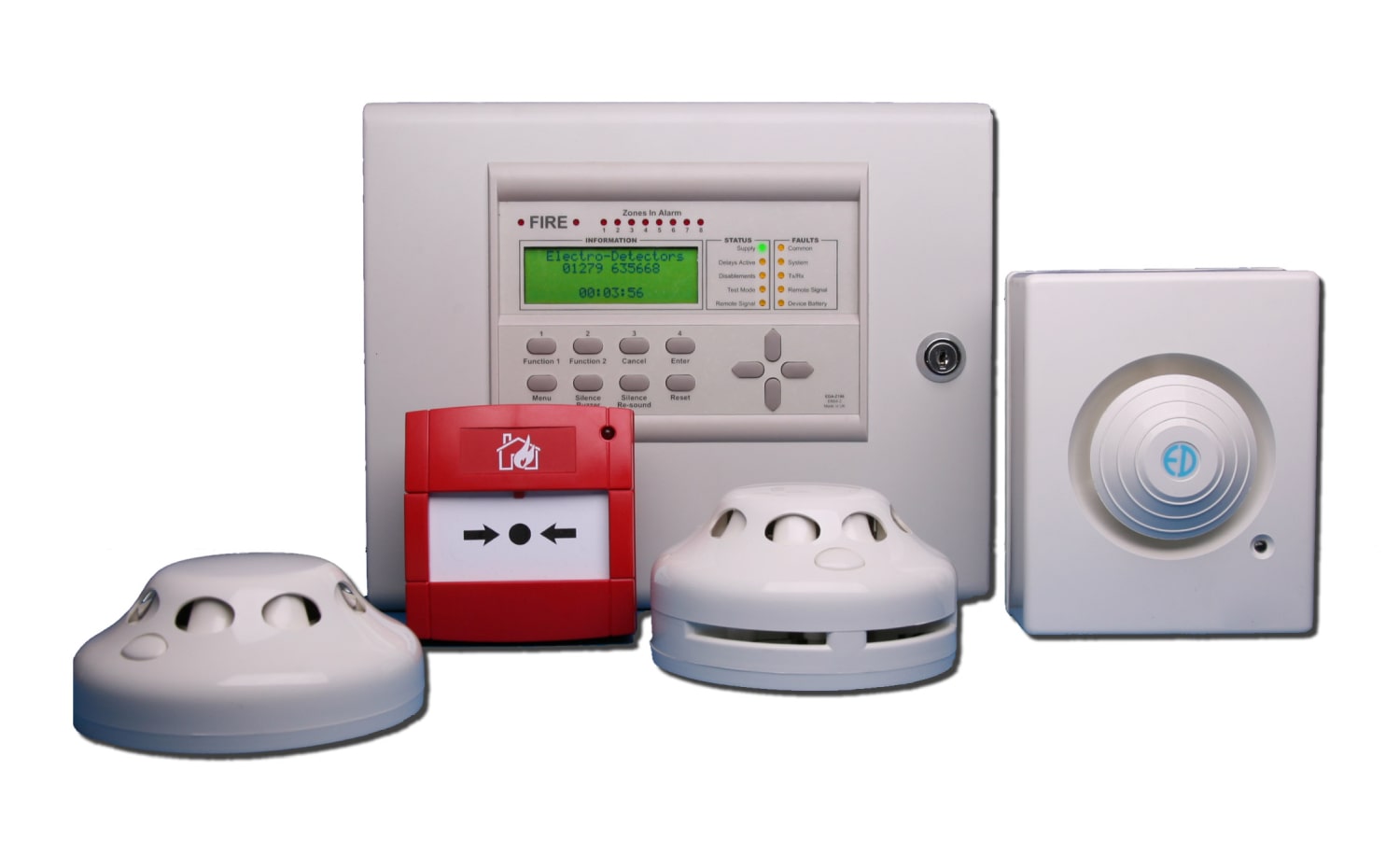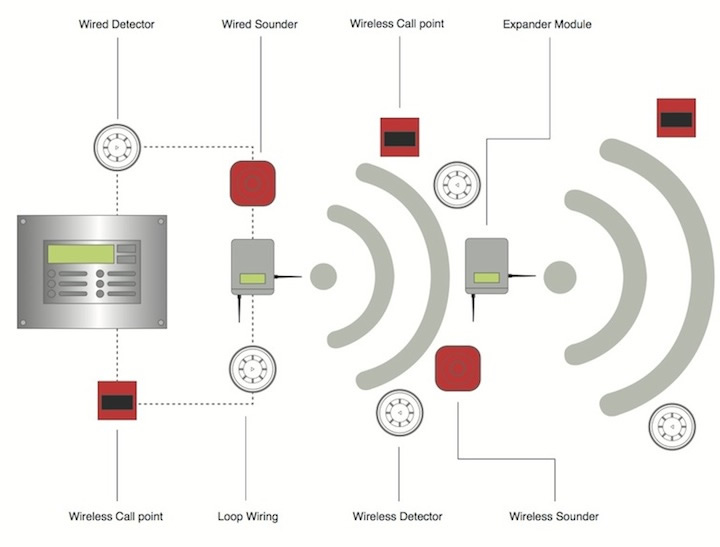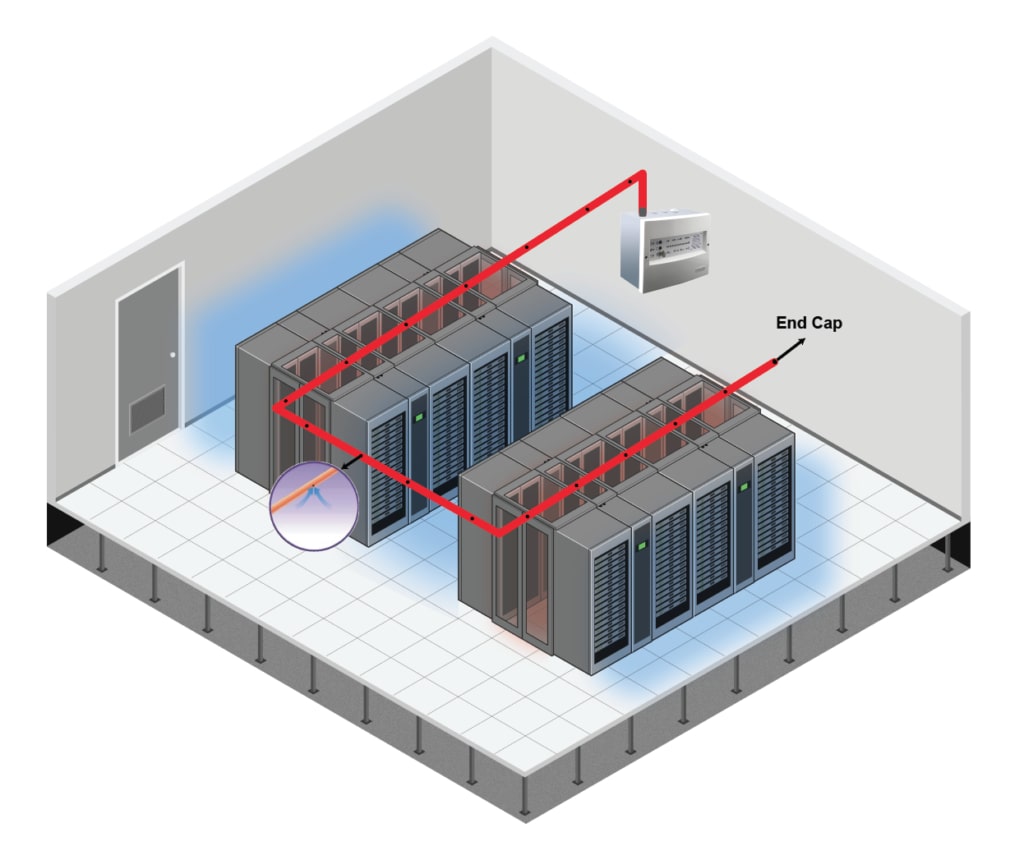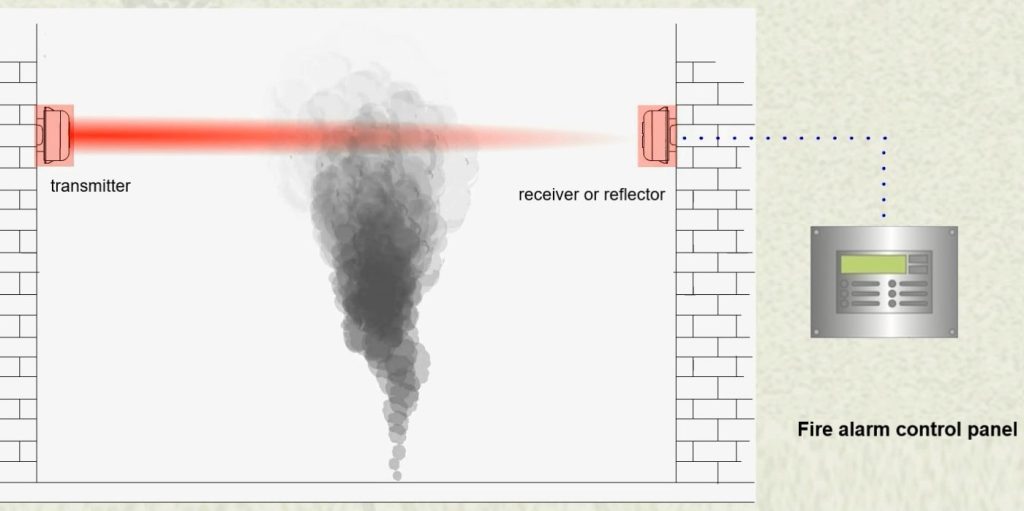FIRE ALARM SYSTEMS
Fire detection technology is one of the most effective tools for identifying fires at an early stage, enabling a rapid response that is critical to preventing the spread of fire and smoke. This early detection is vital for the safety of both the building and its occupants.
A fire alarm system consists of multiple interconnected components designed to work together to continuously monitor and protect designated areas.
Currently, the two most common fire alarm system technologies are conventional and addressable systems. The primary difference between them lies in how signals from connected devices communicate with the control panel. While cost is often a key factor in selecting a new fire alarm system, the initial price should be considered alongside the long-term benefits of enhanced protection and reliability offered by the chosen system.

CONVENTIONAL FIRE ALARM SYSTEMS
Conventional Fire Alarm Systems are the most commonly chosen solution for monitoring small to medium-sized buildings, especially those with fewer areas to supervise or large open spaces. Their main advantage is cost-effectiveness. However, two significant drawbacks are limited scalability for future expansions and the inability to precisely identify which device has detected a fire. This limitation can make it more challenging to prioritize urgent actions and make informed decisions during a fire event in certain types of buildings.
ADDRESSABLE FIRE ALARM SYSTEMS
The initial investment cost of Addressable Fire Alarm Systems is higher than that of conventional systems; however, they are designed to monitor more complex or larger facilities. This technology can precisely identify each individual device that is activated or experiencing a fault, allowing necessary actions to be carried out quickly and effectively in the event of a fire alarm. Unlike conventional systems, if a loop is disrupted at one device, the system can still report the issue while maintaining control over the other devices connected to that loop. Additionally, addressable systems offer greater scalability and enhanced integration capabilities with other devices, enabling the programming of predefined automatic actions, including alert notifications via optional communication modules.
WIRELESS FIRE ALARM SYSTEMS
The main advantage of Wireless Fire Alarm Systems is their quick installation, eliminating the need for disruptive building work to install wiring in existing structures with limited or no space for new cables. Wireless systems significantly reduce the labor hours required for new installations.
Additional benefits include greater flexibility to add more devices, modify the installation, or relocate equipment to accommodate the dynamic use and layout changes often required in buildings with frequently changing activities.
Recent advances in wireless product design have drastically lowered power consumption. Coupled with longer battery life and improved, cost-effective power storage solutions, these innovations are making wireless fire alarm systems an increasingly viable and attractive option for fire protection in certain projects.

AIR SAMPLING SMOKE DETECTION SYSTEMS
In broad terms, a Sampling Smoke Detection System consists of a detection chamber equipped with sensors to detect smoke particles, a vacuum pump, a network of pipes with calibrated holes to transport air samples to the chamber, and a control unit capable of analyzing the information received from the sensors in the detection chamber to trigger alarms.
Air sampling smoke detection systems can identify fires at a very early stage. This capability is especially valuable for protecting mission-critical and high-risk environments such as data centers, museums, valuable archives, and libraries. They are also ideal for spaces where traditional optical smoke detectors are unsuitable due to activities that generate airborne particles, which can contaminate sensors and cause false alarms.

LINEAR HEAT DETECTION SYSTEMS
Linear Heat Detection technology can detect fires at an early stage by using a specially designed cable that acts as a heat sensor, responding to physical or electronic changes triggered by a preset temperature threshold anywhere along its entire length.
Linear heat detection is an ideal solution for environments where other detection technologies may be impractical or less effective. These systems are commonly used to protect large buildings, solar panels, oil tanks with fixed or floating roofs, cold storage facilities, escalators, conveyor belts, and are particularly useful for monitoring potential overheating of cables within electrical installations.
The cables can be connected to either conventional or addressable fire alarm systems via monitoring modules, with each zone capable of monitoring up to 3,000 meters of cable.

OPTICAL BEAM SMOKE DETECTORS
Beam Smoke Detectors assemblies typically consist of a transmitter, a receiver, and a controller; in some designs, these functions are integrated into a single device. The system projects a beam of infrared light from the transmitter to the receiver.
When smoke interferes with the infrared beam, the receiver detects this disruption and triggers the fire alarm along with any other programmed responses. The receiver must be calibrated to the appropriate sensitivity level based on the building’s application to minimize false alarms.
Beam smoke detectors are often the most suitable choice for protecting large, open spaces with high ceilings, where installing traditional optical or thermal smoke detectors would significantly increase costs. These environments may have high dust concentrations, or regulations may restrict the use of conventional detectors due to ceiling height, examples include movie theaters, bulk storage areas, and large industrial warehouses.

FLAME DETECTORS
Flame detectors are devices designed to identify fires at a very early stage. This technology is especially useful for monitoring areas where fire hazards manifest flames before smoke, and in environments where rapid response is critical due to the inherent risks involved.
Flames emit electromagnetic radiation across various wavelengths, including infrared (IR), visible light, and ultraviolet (UV), depending on the fuel source. Modern flame detection technologies utilize UV, UV/IR, and multi-spectrum infrared sensors to accurately detect flames.
Flame detectors are commonly used in the Oil & Gas industry and are particularly valuable for detecting fires caused by thermal runaway in lithium-ion “zombie” batteries at waste treatment facilities.

